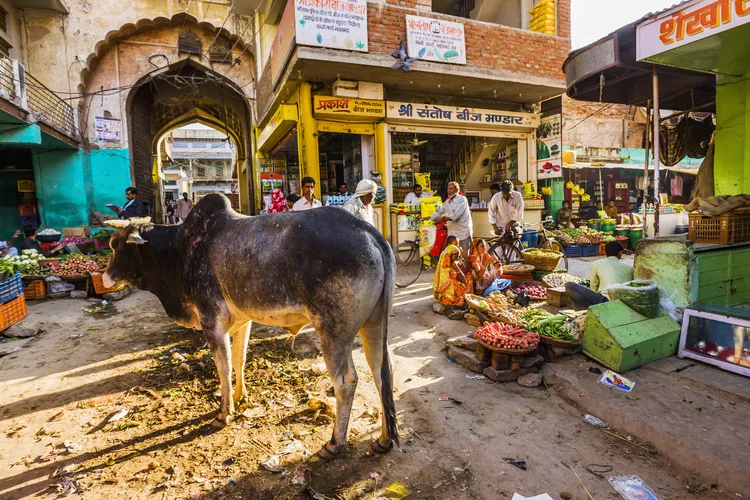Summary of What to Expect in India
What to Expect in India
If you’re visiting India for the first time, you’re probably feeling a bit apprehensive and wondering what to expect. This feeling is entirely normal for anyone traveling to this diverse country. India truly is unlike anywhere else in the world—it’s a vibrant, sensory experience that often leads to culture shock. This article aims to minimize that shock by preparing you with essential insights.
1. Leaving the Airport in India
Stepping out of the airport can be disorienting. You’ll immediately notice the heat and the overwhelming number of people. If you’re not accustomed to warm and humid climates, the weather in many regions of India will certainly catch your attention. The sheer density of the population is astonishing—you’ll find people everywhere, leaving you curious about their stories. Moreover, you’ll observe that a significant number of these individuals are men.
2. Roads in India
Chaos best describes the roads in India! Taking a taxi can be thrilling, but walking as a pedestrian can be even more intense. Generally, smaller vehicles yield to larger ones, and drivers display unique weaving and merging habits. To cross the street safely, acclimate yourself to the environment—walking confidently into traffic is the norm, as drivers will usually stop for you. While many roads have potholes and can be poorly maintained, India also boasts impressive highways.
3. Cows and Other Animals in India
Just as many might question whether kangaroos roam city streets in Australia, travelers often wonder if cows truly wander through the streets of India. Indeed, you will find these bold animals milling around, even near beaches. While most are harmless, it’s worth noting that there have been rare instances of erratic behavior. Beyond cows, expect to see donkeys and bullock carts, as well as the occasional camel in places like Rajasthan.
4. Sounds in India
India is anything but quiet. The honking of horns is a typical soundscape, with drivers honking around corners and when overtaking. The incessant noise can be overwhelming, making sound-canceling headphones a wise travel accessory. In addition to vehicular sounds, expect construction noise, street celebrations, and calls to prayer. Confusing conversations might also lead you to believe intense disputes are occurring, owing to the animated delivery and volume.
5. Smells in India
The olfactory experiences in India can be both delightful and off-putting. While garbage and urine odors may be present, you will also encounter the rich scents of spices and incense, especially during the evening. Exploring the streets during this time can be an aromatic adventure, with the inviting smell of fresh snacks enhancing the experience.
6. People in India
Travelers often note that the warmth and curiosity of the Indian people are highlights of their trip. Indian communities are tight-knit, leading to a welcoming atmosphere for visitors. However, be prepared for an invasion of personal space, as stares and personal inquiries are common. Although this might feel confronting, reciprocating the interest often leads to friendship. Nevertheless, be cautious of photo requests; not all intentions are pure.
7. Dirt in India
Many visitors are surprised by the visible lack of sanitation, evidenced by the amount of dirt and litter. The concept of public cleanliness often varies, with many prioritizing the cleanliness of their homes over public spaces. However, recycling is prevalent, and rag pickers often make a living by sorting through waste.
8. Poverty in India
The visible contrast of wealth in India is striking, with luxurious homes existing in close proximity to makeshift shelters. While it is natural for tourists to feel compelled to help, offering direct assistance can sometimes do more harm than good. Remember, the Indian populace prioritizes shared experiences over external solutions to deep-seated societal issues.
9. Scenery in India
India is a photographer’s paradise, offering endless scenic and captivating sights at every turn. The country’s stunning landscapes and historical architecture ensure that your camera will be constantly at the ready.
10. Development in India
India’s rapid economic growth has undoubtedly enhanced its appeal for travelers. The influence of western culture is apparent in cities like Mumbai and Delhi, where modern supermarkets and malls are becoming commonplace. With a burgeoning middle class and increased accessibility to technology, the lifestyle in urban areas has transformed significantly, leading to an influx of contemporary dining and entertainment venues.
11. Day to Day Activities in India
Be prepared for daily tasks to take considerable more time than you’re used to back home. Expect inefficient procedures, various barriers to communication, and frequent closures due to lunch breaks, not to mention large crowds. Popular notions around time might not apply here, and asking “Why?” often leads nowhere. Persistence is key—many assert that in India, everything takes longer, but it is still achievable.
12. Pricing in India
Foreigners should be aware that prices are commonly inflated—sometimes up to three times higher than local rates. As such, haggling is essential; never accept the initial offer. Negotiation is not only expected but appreciated in the vibrant markets across the nation.
13. Safety in India
While India is often labeled as “unsafe,” the reality is that it poses similar safety concerns as many countries. However, unique discomforts arise for tourists, particularly female travelers. Solo females may want to consider starting their journey in South India, particularly Tamil Nadu, where the environment is generally more welcoming.
Adjusting to life in India can take time. However, as you navigate the complexities and discrepancies within the country, it won’t be long before you find the paradoxical charm that draws many to India time and again.




